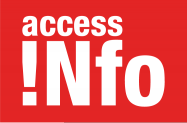| Is media ownership transparent? | |
|---|---|
| In law | YES |
| In practice | NO |
IN LAW
According to the law, it is possible to finds out who owns print, broadcast and online media in Norway through information reported to the Norwegian Media Authority. Under the 1997 Media Ownership Act, on the request of the Norwegian Media Authority, all media must report sufficient information for their owners to be identified. It should be noted that, in common with Luxembourg and the UK, the Norwegian law does not specific exactly what information should be reported but rather relies on the media authority to request of the media the information it deems necessary. In practice in Norway this will include all the key information required to identify an owner back to a company – not necessarily back to an individual. This would include information on the size of shareholdings, beneficial owners and those with indirect interests and control. This information is made public by the Norwegian Media Authority on its website.
IN PRACTICE
In general, it is possible to obtain ownership information via the Norwegian Media Authority in practice although the information published on the website only reveals ownership back to a company, not to a real person.
The law also requires media to report sources of revenue. With regard to other sources of financing, such as sponsorship, all the “established” media are members of the Norwegian Press Organisation
RELEVANT LEGISLATION
| Law | Media covered by law |
|---|---|
| The Media Ownership Act – Act of 13/6-1997 number 53 | Broadcast, print and online media |
| The Limited Companies Act of 13/6-1997 number 14 | Broadcast, print and online media |
| The Public Limited Liability Companies Act of 13/6-1997-45 | Broadcast, print and online media |
INFORMATION SOURCES
Access Info – Norway media ownership law and practice research questionnaire: www.access-info.org/wp-content/uploads/tmo_norway_17july2013.doc
Media Register, Norwegian Media Authority http://medietilsynet.no
Register of Business Enterprises – https://www.brreg.no/the-bronnoysund-register-centre/business-in-norway/
[i] In Norwegian – Norsk Presseforbund